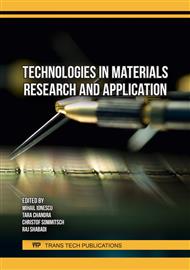p.3
p.9
p.15
p.21
p.31
p.39
p.45
p.51
A Unified Representation for Fundamental Equations of Various X-Ray Stress Measurement Methods
Abstract:
The X-ray stress measurements by the sin2ψ method, the cos α method and the XRD2 method are basically composed of the fundamental equations based on diffraction vectors and the calculation for determining X-ray stress. The fundamental equations are expressed differently, which are due to the fact that the measurement systems associated with the incident X-ray control device and the diffracted X-ray detector are different. Although the dependent variable that is the measured quantity is the same diffraction angle theta in the fundamental equations, the main independent variable is different like the tilt angle ψ in the sin2 ψ method and the central angle α, γ of the Debye-Scherrer ring in the cos α method, the XRD2 method, respectively. Therefore, the stress determination method has been devised based on each the fundamental equation. By clarifying the differences between each X-ray stress measurement method and making a relationship, a unified representation for the fundamental equations is formalized. Therefore, a comparison of each X-ray stress measurement method is expressed in the same Euler space, and a conversion method for each X-ray stress measurement method is presented.
Info:
Periodical:
Pages:
9-13
Citation:
Online since:
December 2023
Authors:
Price:
Сopyright:
© 2023 Trans Tech Publications Ltd. All Rights Reserved
Share:
Citation:



